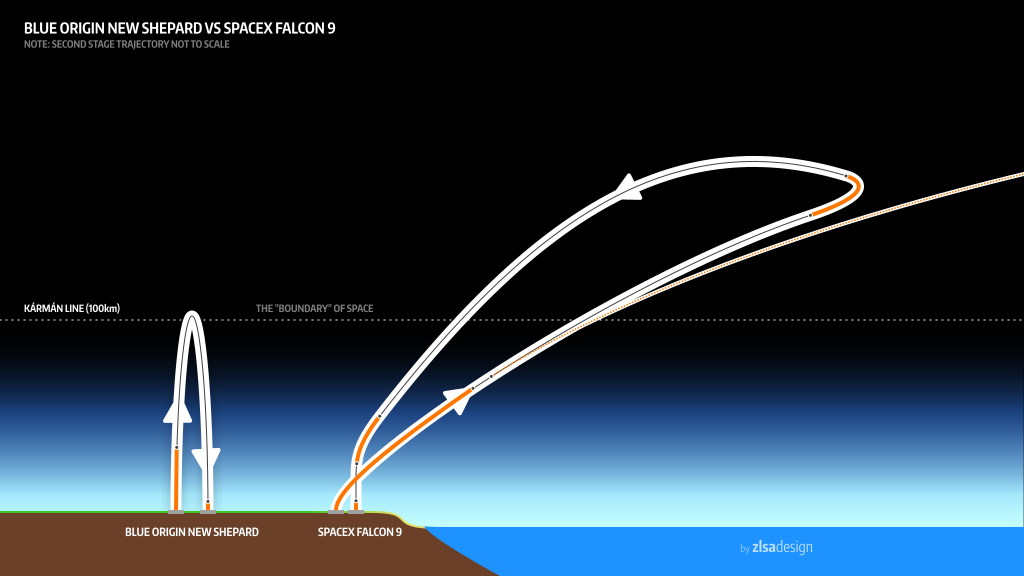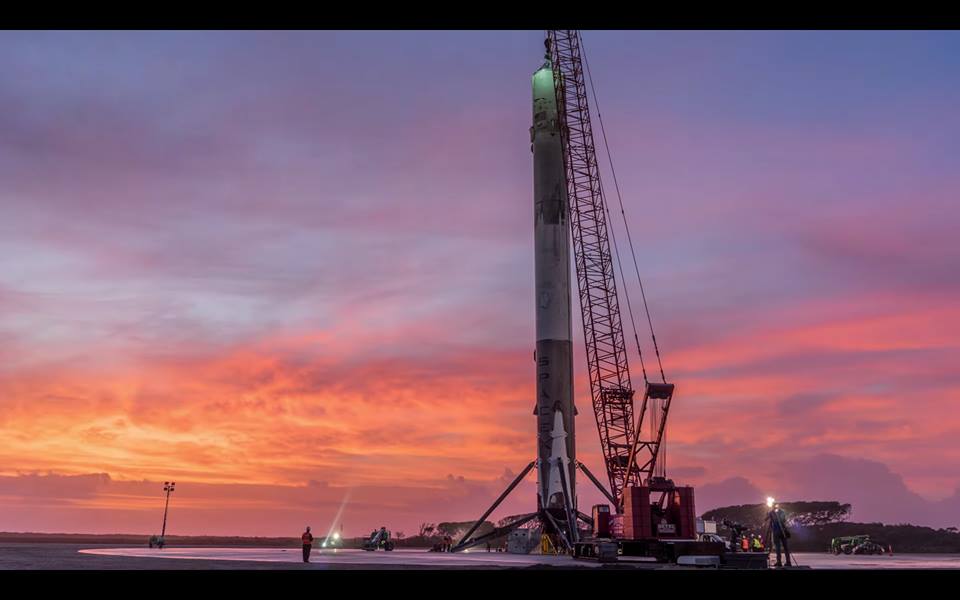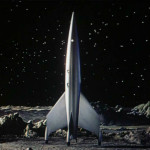Vertically landing rockets have been a staple in science fiction for a long time:
And in the 1960s, Wernher von Braun’s Saturn team was already intensely thinking about outfitting future versions of the Saturn V with reusable stages. Among the many concepts studied were a winged flyback version and a parachute-assisted return. Unfortunately, these ambitions never went beyond the drawing stages. While closing down the Apollo program, NASA made the fateful (and as we now know, mistaken) decision to pursue the Space Shuttle as NASA’s exclusive launch vehicle. The vehemently protesting Wernher on Braun was sidelined and “kicked up” into a senior administrative position with little real decision making power. (Disappointed and unsatisfied, he left NASA a few years later). Since then, astronauts have been confined to low Earth orbit, going essentially nowhere but in circles.
It took almost five decades for the reusable rocket concept to return and become reality, and it was neither NASA nor any other national space program, but two private companies which accomplished the first proof-of-concept.
In November 2015, Blue Origin had successfully landed an experimental test rocket at its launch site in West Texas. It plans to use the rocket again. And on December 21, 2015, California based SpaceX successfully launched a Falcon 9 rocket to space while returning and landing the rocket’s 1st stage to the launch site for a powered, vertical landing. For the first time a rocket has been successfully landed during a commercial satellite launch.
The concepts used by the two companies are very different, as illustrated here:

The end result result of the SpaceX flight is certainly stunning and resembles what science fiction described so many decades ago:

It now remains to be seen if recovering and refurbishing an entire rocket stage and its engines is indeed cheaper than building a new one — something that hasn’t been tried on a commercial scale. But if Wernher von Braun was right (and he usually was), this should be the way to go.









